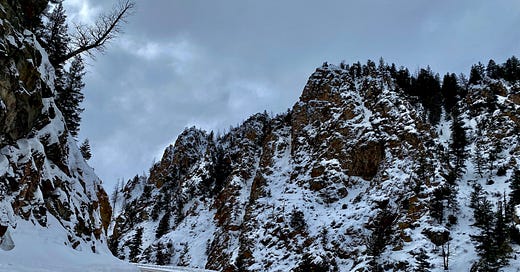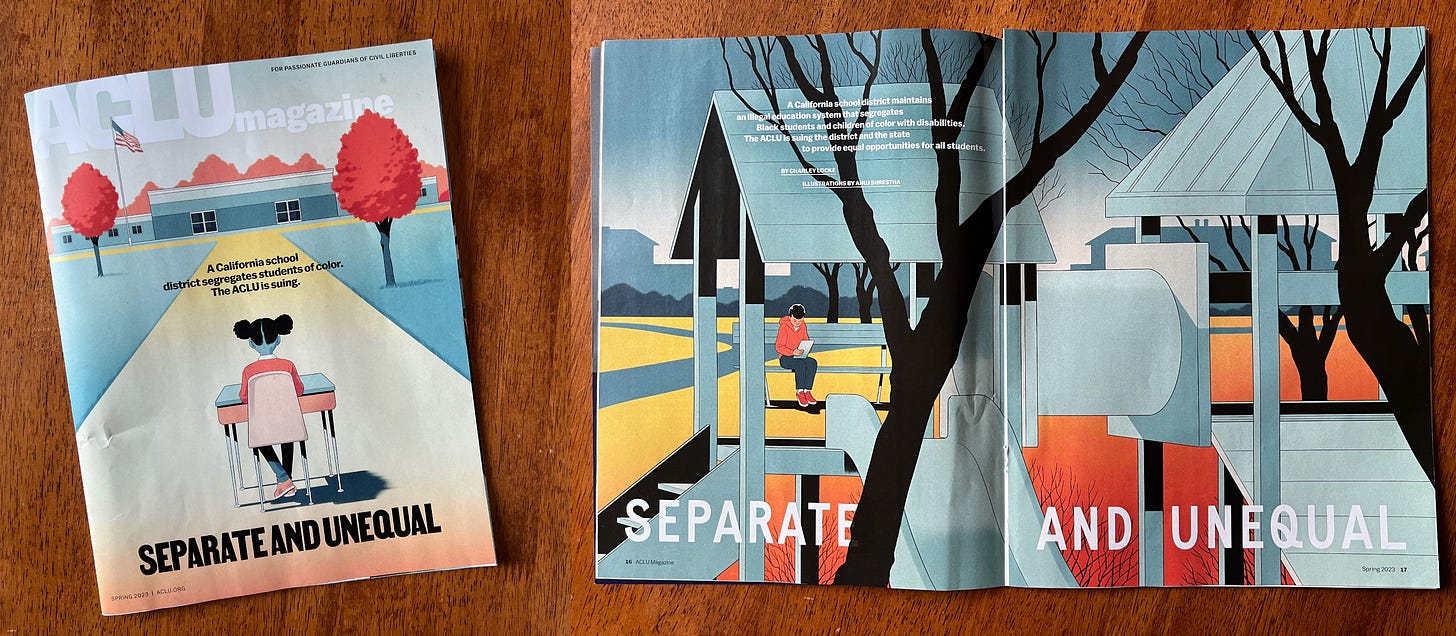Hi readers,
Thanks for subscribing to Travels with Charley. I send these dispatches around once a month, writing on four different fronts: where I’m living, what I’m reading (lines I’m adding to my commonplace book this month), what I’m wondering (questions for future stories), and what I’m writing. If you feel moved to write back, the questions are genuine! I’d love to hear from you.
Where I’m living
Hello from a tiny town in the Colorado Rockies, where I’m either skiing, working in front of the fire, or soaking in the sulfur hot springs four blocks away. Town includes a post office, a drive-through pie restaurant, and an old-timey candy store, the kind where you can also buy a fill-your-own-bag of rocks (remember those?).
What I’m reading
Álvaro Enrigue, who writes like if Roberto Bolaño got high, got a fit of the giggles, and got lost in a Caravaggio exhibit (Sudden Death):
Descriptions of works of art, like descriptions of dreams, halt stories and sap their strength. A work of art can be part of the story only if it alters the line of history as it’s being drawn, and yet if a work of art, like a dream, is worth remembering, it’s precisely because it represents a blind spot for history. Art and dreams don’t stick with us because they have the capacity to move things along, but because they stop the world: they function as a parenthesis, a dyke, a moment of rest.
N. Scott Momaday, who imbues sensuality into a motion, a breeze, the swing of an axe (House Made of Dawn):
She had never seen a man put his back to his work before. Always there had been a kind of resistance, an angle of motion or of will. But it was different with him; he gave himself up to it. He took up the axe easily, and his strokes were clean and deep. The bit fell into the flesh of the wood and the flesh curled and spun away. He worked rocking on his hips, his feet set wide apart and his neck bowed and swollen out. She watched, full of wonder, taking his motion apart. He raised the axe, drawing the curve of the handle out and across his waist, sliding back his hand until it lay against the black metal wedge; then his shoulders turned and wound up the spine. There was an instant in which the coil of his body was set and all his strength was poised in the breach of time, then the infinite letting go. He leaned into the swing and drove; the blade flashed and struck, and the wood gaped open. Angela caught her breath and said, “I see.” A soft breeze blew in at the window and touched her hair at the temples. The sunlight struck silver on the leaves of the fruit trees, and she grew restless and intent.
Laurie Colwin, one of the writers (alongside Dorothy Parker) I most wish I could hear gossip from. Read this description and tell me you don’t see poor Arleen perfectly (Passion and Affect):
Arleen Solidark, stiffly peruked, extended her bosom over counter two. She had daggerlike nails that were painted a silvery peach. Harry knew that her husband was allergic to cats.
Danyel Smith’s rhythmic, poetic profile of SZA (Sad Girl Music heir to Bessie Smith, Sarah Vaughan, Sade), a lyrical exploration of what happens when an outsider with an outlet is pushed to the edge:
The tension blistered. In my 50s, I still have in me a bit of the girl on the back of some boy’s Ninja bike, going 80 miles an hour in shorts and sandals. It feels like freedom when falling would not be the worst outcome. And no one can touch you, because they’re too scared to even come close.
… The pain of you-can’t-sit-with-us tattoos your soul. It can send you into a cave of depression. It can be the stupid thing that didn’t kill you but pushes you to emit protagonist energy worthy of adoration and hate. It can make you write and sing what you want when you want because — you know what? Eat dirt. Pay me. Love me. Know by heart my every lilting, diffused enunciation. Shudder beneath my raw blue soundclouds.
What I’m wondering
What did you want to know, but not know how to ask, when you were in middle school? What do you wish you could tell your younger self about puberty?
What do you love most about where you live? If you could have one thing you miss—a jazz club, a bathtub, a family member nearby—what would it be?
What’s a lucky superstition you do? (Tie your left sneaker first? Listen to a specific song before a job interview?)
What I’m writing
I wrote the cover story for the latest issue of ACLU Magazine, “Separate and Unequal,” about how the Pittsburg, California school district segregates and discriminates against Black students and English learners. I’m very grateful to kids and families for opening up to me for this story, and to the very talented Anuj Shrestha for the illustrations. (He also brilliantly illustrated the climate project from The New York Times Magazine that I worked on last fall, which was just nominated for an ASME.)
You can read the ACLU cover story here.
For The New York Times for Kids, I wrote about newcomer classrooms, which are for students who have been in the U.S. for less than three years. These kids from wildly different backgrounds—from Afghanistan, El Salvador, Bangladesh, Ukraine, Yemen—help each other adjust and figure out how to be a kid in America. Find the story in print in the Times this Sunday, February 26.
yours,
Charley






The comment below was meant as a response to the question “What did you want to know when you were 13?” I just realized it was the title of this edition of the newsletter.
How to make the veins in my pudgy forearms stand out, so they’d look powerful. I tried hanging them down, like a simian knuckle-dragger, hoping gravity would make my blood flow into them, but they remained white and weak and fleshy, like the Pillsbury Doughboy.